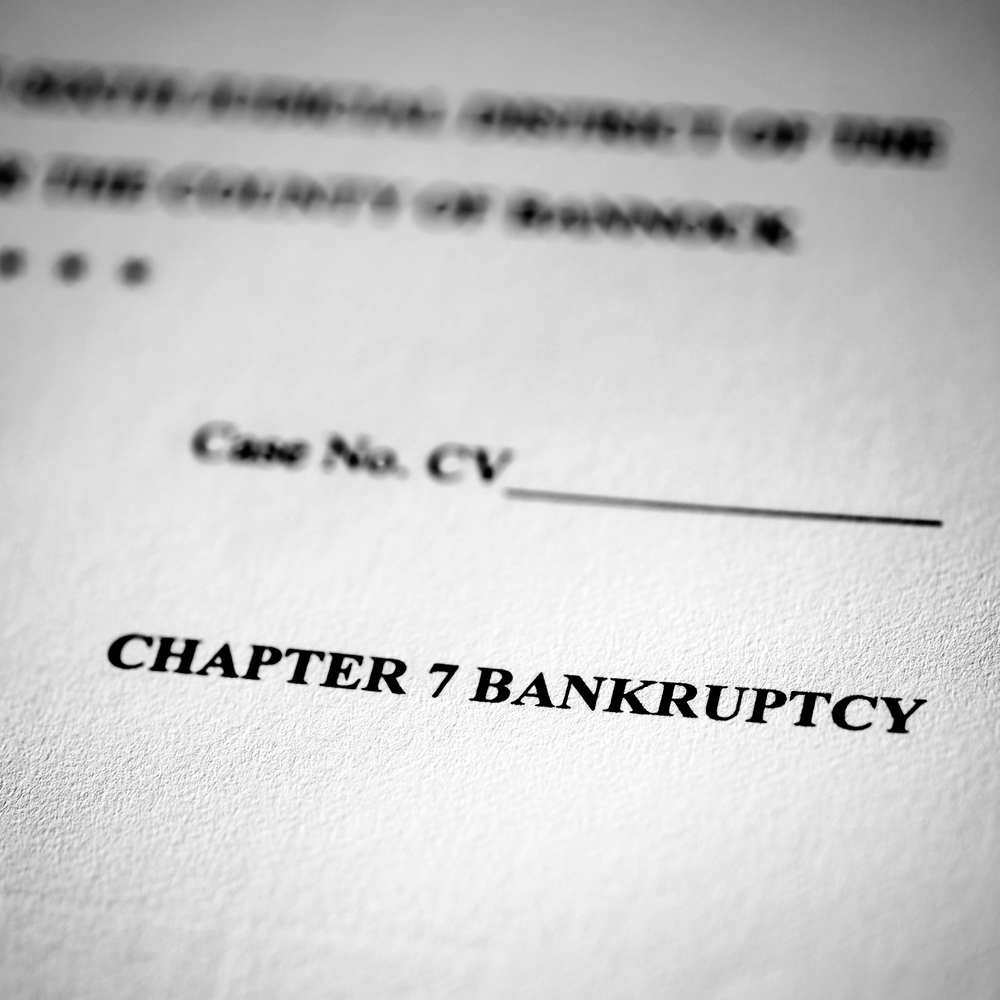Filing for Chapter 7 bankruptcy can provide significant debt relief, but it comes with strict eligibility criteria, particularly concerning Chapter 7 bankruptcy income limits. This article explores the income limits for Chapter 7 bankruptcy in Nevada, detailing how to determine eligibility, pass the means test, and understand the allowable expenses and guidelines that play a crucial role.
Understanding Chapter 7 Bankruptcy
Chapter 7 bankruptcy, often called “liquidation bankruptcy,” allows individuals to discharge most of their unsecured debts. This type of bankruptcy case is particularly beneficial for those with overwhelming consumer debt and limited disposable income. However, qualifying for Chapter 7 bankruptcy involves meeting specific income criteria determined through the means test.
What is the Means Test?
The bankruptcy means test is a calculation used to determine whether an individual’s income exceeds the allowable limit for filing Chapter 7 bankruptcy. This test ensures that only those who cannot repay their debts can discharge them under Chapter 7. The test compares your average monthly income over the past six months to the median income for a household of your size in Nevada.
Income Limits for Chapter 7 Bankruptcy in Nevada
Median Income in Nevada
To determine eligibility for Chapter 7 bankruptcy, the first step is to compare your current monthly income to the median income in Nevada. The median family income-based metrics are utilized in calculating eligibility under the means test for bankruptcy cases; if your income is below this level, you typically qualify for Chapter 7 without further proving your financial situation.
For 2024, the median income for a single earner in Nevada is approximately $55,000 annually. For a household of two, the median income is around $75,000, and for a family of four, it is about $90,000. These figures are adjusted periodically, so verifying the current median income is essential when considering bankruptcy.
Current Monthly Income and Household Size
Your current monthly income is calculated by averaging your gross income over the six months before filing for bankruptcy. This average monthly income is then annualized to compare with the median household income for your household size. It’s important to accurately calculate your household size, including dependents, as this significantly affects the income threshold.
Income Limits and the Means Test
If your average monthly income exceeds the median income for your household size, you must complete the means test to determine if you can still qualify for Chapter 7. The means test involves a detailed analysis of your income and expenses to see if you have enough disposable income to repay a portion of your debts.
Allowable Living Expenses
The means test deducts allowable living expenses, including household expenses, from your income to calculate your disposable income. These allowable expenses are based on standards set by the IRS and include:
- Housing and Utilities: Mortgage or rent payments, property taxes, and utility bills.
- Food and Clothing: Standard allowances for food, clothing, and personal care.
- Transportation: Car payments, insurance, and operating expenses.
- Healthcare Expenses: Medical and dental expenses, health insurance premiums.
- Childcare and Education: Costs for childcare and education, including tuition.
- Taxes and Mandatory Deductions: Income taxes, Social Security, and union dues.
These expenses are subtracted from your average monthly income to determine if you have enough disposable income to pay unsecured creditors.
Disposable Income Calculation
After accounting for allowable living expenses, the remaining amount is your disposable income. If your disposable income is below a certain threshold, you may qualify for Chapter 7 bankruptcy. If it is above, you may need to consider Chapter 13 bankruptcy instead, which involves a repayment plan.
How to Pass the Means Test for Chapter 7
Detailed Financial Records
It’s crucial to maintain detailed financial records to pass the means test. This includes pay stubs, bank statements, tax returns, and receipts for all living expenses. Accurate documentation ensures that you correctly report your income and allowable expenses.
Accurate Reporting
Ensure that you accurately report all sources of income, including gross wages, retirement income, rental income, and any other sources. Misreporting income can lead to disqualification or even allegations of bankruptcy fraud.
Legal Assistance
Hiring a bankruptcy lawyer can significantly increase your chances of passing the means test. A lawyer can help you navigate the complex paperwork, ensure all expenses are accounted for, and provide legal advice tailored to your specific situation.
Special Circumstances
Certain special circumstances, such as high healthcare expenses or necessary home repairs, can be considered when calculating allowable expenses. Providing detailed documentation and justifying these expenses can help reduce your disposable income, improving your chances of qualifying for Chapter 7.
Re-Evaluation of Income
Consider re-evaluating your financial situation if your initial means test calculation indicates that your income exceeds the limit. Employment changes, income reduction, or increased expenses can impact your eligibility. Consulting with a bankruptcy lawyer can help identify any changes affecting your qualification.

Understanding Allowable Monthly Expenses
Housing Costs
Housing costs include mortgage payments or rent, property taxes, homeowner’s insurance, and utilities. These costs are considered essential and are deducted from your income during the means test calculation.
Transportation Expenses
Transportation expenses include car payments, fuel costs, public transportation fees, and vehicle maintenance. These expenses are necessary for maintaining employment and daily activities.
Food and Clothing
The IRS sets standard allowances for food and clothing based on household size. These standards are used in the means test to ensure a reasonable amount is deducted for necessary living expenses.
Healthcare and Insurance
Healthcare expenses, including medical and dental costs, prescription medications, and health insurance premiums, are critical deductions. High medical expenses can significantly reduce your disposable income, aiding in passing the means test.
Childcare and Education
Childcare and educational expenses, such as tuition and school supplies, are considered necessary expenses. These costs are deducted from your income to calculate disposable income.
Impact of Income Taxes and Social Security
Income Taxes
Income taxes, including federal, state, and local taxes, are mandatory deductions from your income. These taxes reduce your gross income and are considered when calculating disposable income.
Social Security Income
Social Security income, including retirement and disability benefits, is considered in the means test. However, these benefits are often protected from garnishment, providing additional financial stability.
Special Considerations for High Income Earners
High Disposable Income
Passing the means test may be challenging for high-income earners. However, significant allowable expenses, such as high healthcare costs or multiple dependents, can help reduce disposable income.
Business Debt
These can be factored into the means test if you have business debt or expenses incurred for a business or profit motive. Business-related expenses can help lower your disposable income, improving your chances of qualifying for Chapter 7.
Justifying Additional Expenses
Additional expenses, such as necessary home repairs or high medical costs, may be justified during the means test. Detailed documentation and legal advice can help in presenting these expenses effectively.

Filing for Chapter 7 Bankruptcy in Nevada
Initial Consultation
The first step in filing for Chapter 7 bankruptcy is an initial consultation with a bankruptcy lawyer. During this consultation, you will discuss your financial situation, income, and expenses and determine your eligibility for Chapter 7.
Preparing Documentation
Gather all necessary documentation, including income records, expense receipts, and any other relevant financial information. Accurate and complete documentation is essential for a successful bankruptcy filing.
Filing with the Bankruptcy Court
Your lawyer will help you prepare and file the necessary paperwork with the bankruptcy court. This includes the bankruptcy petition, assets and liabilities schedules, and a financial affairs statement.
Attending the Meeting of Creditors
After filing, you will attend a meeting of creditors, where the bankruptcy trustee and creditors can ask questions about your financial situation. Your lawyer will prepare you for this meeting and represent you during the proceedings.
Receiving the Bankruptcy Discharge
If you qualify for Chapter 7 and meet all requirements, you will receive a bankruptcy discharge, eliminating most unsecured debts. This discharge provides significant debt relief and a fresh financial start.
Detailed Breakdown of the Means Test Calculation
Step-by-Step Guide to the Means Test
The means test involves several steps to determine your eligibility for Chapter 7 bankruptcy:
- Calculate Current Monthly Income
- Combine all sources of income, including wages, retirement income, and rental income, over the past six months.
- Divide the total by six to get the average monthly income.
- Compare to Median Income
- Compare your average monthly income to the median income for a household of your size in Nevada. If it’s below the median, you typically qualify for Chapter 7.
- Subtract Allowable Expenses
- Deduct allowable living expenses from your average monthly income. These expenses include housing costs, transportation, food, healthcare, childcare, and taxes.
- Determine Disposable Income
- The remaining amount is your disposable income. You pass the means test if this amount is below a specific threshold.
Allowable Expenses in Detail
Housing and Utilities
Housing and utilities are significant expenses considered in the means test. These include:
- Rent or Mortgage Payments: The amount you pay for housing.
- Utilities: Bills for electricity, water, gas, and other essential services.
- Property Taxes and Insurance: Annual costs spread out over the year.
Food and Clothing
The IRS provides standard allowances for food and clothing based on household size. These standards help meet your essential needs while calculating disposable income.
Transportation
Transportation expenses cover:
- Car Payments: Monthly payments for vehicle loans.
- Fuel and Maintenance: Costs for fuel, repairs, and regular maintenance.
- Public Transportation: Bus and train fares if applicable.
Healthcare Expenses
Healthcare costs include:
- Medical and Dental Expenses: Regular medical bills and dental care.
- Prescription Medications: Costs for necessary medications.
- Health Insurance Premiums: Monthly premiums for health insurance coverage.
Childcare and Education
For families, childcare and education expenses are critical and include:
- Childcare Costs: Daycare or babysitting expenses.
- Educational Expenses: School tuition, supplies, and extracurricular activities.
Special Circumstances and Justifications
High Medical Expenses
If you or a family member have high medical expenses, these can significantly impact your means test calculation. Detailed records of medical bills and a clear explanation of their necessity can help justify these expenses.
Necessary Home Repairs
Home repairs that are necessary for safety and livability can also be included. Documenting these repairs with receipts and professional assessments will support your case.
Business-Related Expenses
These can be factored into the means test if you have business debt or expenses incurred for a business or profit motive. Proper documentation and justification of these expenses can lower your disposable income.

Exploring Alternatives to Chapter 7 Bankruptcy
Chapter 13 Bankruptcy
If you do not qualify for Chapter 7, Chapter 13 bankruptcy is an alternative. Under Chapter 13, you propose a repayment plan to pay off your debts over three to five years. This plan allows you to keep your property while making manageable monthly payments.
Benefits of Chapter 13
- Debt Repayment Plan: A structured plan to repay debts over time.
- Property Retention: Ability to keep your home and other assets.
- Automatic Stay: Protection from creditors’ collection actions.
Debt Management Plans
Nonprofit credit counseling agencies offer debt management plans (DMPs) as an alternative to bankruptcy. A DMP involves working with a credit counselor to create a repayment plan with reduced interest rates and waived fees.
How DMPs Work
- Credit Counseling: Initial consultation to assess your financial situation.
- Repayment Plan: Development of a plan to pay off debts in three to five years.
- Negotiations: Credit counselor negotiates with creditors for better terms.
Debt Settlement
Debt settlement involves negotiating with creditors to settle your debts for less than the full amount owed. While this can be an option for some, it has significant drawbacks, including a negative impact on your credit score and potential tax implications.
Pros and Cons of Debt Settlement
- Pros: Potential to reduce total debt, avoid bankruptcy.
- Cons: Negative impact on credit score, possible tax liability on forgiven debt.
Preparing for a Chapter 7 Bankruptcy Filing
Gathering Necessary Documentation
Before filing for Chapter 7, gather all necessary documentation, including:
- Income Records: Pay stubs, bank statements, tax returns.
- Expense Receipts: Bills and receipts for allowable expenses.
- Debt Information: Statements from creditors, loan agreements.
Completing Required Credit Counseling
Before filing for bankruptcy, you must complete a credit counseling course from an approved provider. This course helps you understand your options and prepare for the bankruptcy process.
Filing the Bankruptcy Petition
With the help of a bankruptcy lawyer, you will file the bankruptcy petition and accompanying schedules with the local bankruptcy court. This paperwork includes detailed information about your finances, debts, and assets.
The Role of the Bankruptcy Trustee
After filing, a bankruptcy trustee is assigned to your case. The trustee reviews your paperwork, conducts the meeting of creditors, and oversees the liquidation of non-exempt assets to pay creditors.
The Meeting of Creditors
The meeting of creditors, also known as the 341 meeting, is an opportunity for the trustee and creditors to ask questions about your financial situation. Your lawyer will prepare you for this meeting and represent you during the proceedings.
Receiving the Bankruptcy Discharge
If the bankruptcy court approves your Chapter 7 filing, you will receive a discharge of your eligible debts. This discharge eliminates most unsecured debts, providing a fresh financial start.
Post-Bankruptcy Considerations
Rebuilding Credit
After receiving a bankruptcy discharge, rebuilding your credit is essential. Steps to rebuild credit include:
- Timely Bill Payments: Ensure all future bills are paid on time.
- Secured Credit Cards: Use secured credit cards to build a positive payment history.
- Credit Monitoring: Regularly monitor your credit report for accuracy and improvements.
Financial Planning
Creating a comprehensive financial plan helps prevent future financial difficulties. This plan should include budgeting, saving, and investing strategies tailored to your income and expenses.
Avoiding Future Debt
Learning from past financial mistakes is crucial. Avoiding future debt involves:
- Living Within Means: Ensuring expenses do not exceed income.
- Emergency Fund: Establishing an emergency fund for unexpected expenses.
- Financial Education: Continuing to educate yourself about personal finance and debt management.
Understanding the Impact of Chapter 7 on Different Types of Debt
Unsecured Debt
Chapter 7 bankruptcy primarily discharges unsecured debts, including credit card debt, medical bills, and personal loans. These debts are not backed by collateral, making them eligible for discharge.
Secured Debt
Secured debts, such as mortgages and car loans, are treated differently in Chapter 7. While the underlying debt can be discharged, creditors may still have the right to repossess the collateral if payments are not maintained.
Priority Debts
Certain priority debts, including child support, alimony payments, and most tax obligations, are not dischargeable in Chapter 7. These debts must be paid in full, even after bankruptcy.
Student Loans
Student loans are generally not dischargeable in Chapter 7 bankruptcy unless you can prove undue hardship. This requires a separate legal process and is challenging to achieve.
The Role of a Bankruptcy Lawyer
Legal Guidance
A bankruptcy lawyer provides crucial guidance throughout the bankruptcy process. They help you understand your options, prepare the necessary documentation, and represent you in court.
Maximizing Success
Working with an experienced bankruptcy lawyer increases your chances of a successful bankruptcy filing. They ensure all paperwork is accurately completed and filed on time, and help navigate any legal challenges that arise.
Post-Bankruptcy Support
After receiving a discharge, a bankruptcy lawyer can offer advice on rebuilding credit and maintaining financial stability. Their expertise helps ensure long-term financial health.

Take Control of Your Financial Future
Filing for Chapter 7 bankruptcy in Nevada involves understanding the income limits and navigating the means test. By accurately calculating your income, documenting allowable expenses, and seeking legal assistance, you can increase your chances of qualifying for Chapter 7 and achieving financial stability.
DebtBusters is here to help you through every step of the process. Our experienced bankruptcy lawyers will guide you through the means test, help you understand your options, and work to achieve the best possible outcome for your financial situation.
Take the first step towards financial freedom. Contact DebtBusters today for a free consultation and find out if Chapter 7 bankruptcy is right for you.
Schedule your free consultation now!
Related Content: What Disqualifies You From Filing Bankruptcies in Nevada?







